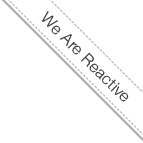What is Internet of Things (IoT)?
The Internet of Things (IoT) refers to the increasing networking of devices, sensors, etc. with the IP addresses known from computer networks (Internet Protocol), often with a cloud-based backend. Many elements of the Internet of Things have already found their way into our daily lives, such as the home automation (smart home) or the closer networking of decentralized electricity producers and consumers via smart city meters, for better utilization of existing networks or Prediction and cushioning of recurrent load peaks.
Another IoT technology under test is the self-driving car, where established market leaders face new challengers like Tesla and Google.
Building elements of the Internet of Things
Characteristic for the IoT is the autonomous data exchange of networked physical objects. This involves huge amounts of data when the locations and interactions of subscribers in the IoT are about to be monitored in order to draw further conclusions or to use algorithms to initiate certain further actions. A good example for this is the congestion forecasts and avoidance from the data of autonomous vehicles which are today already processed in the background in anonymous form in the cloud via Smart Phones with GPS.
In the Internet of Things, the individual participants (things) must be uniquely addressable. This can happen, for example, via RFID or WLAN with IPv6, whereby the increasing miniaturization of processors and sensors opens up many new possibilities, which seemed unthinkable just a few years ago. Although some concepts have long been familiar to us: for monitoring, counting and localizing, we know the tracking codes of parcels, the ubiquitous barcodes and QR codes in trade & logistics such as baggage reclaim at the airport - whereby the participants without any kind of intelligence only act as components of a software-based overall system.
Only the increase in computing power and the accompanying miniaturization of the hardware make it possible today to equip the participants of the Internet of Things with a certain intelligence and logic in form of embedded software. So they can act autonomously and communicate with each other as participants in a distributed system as well as autonomously make local decisions, negotiate or act together.
IoT solutions from one provide
At Clouds Sky, we offer our customers the full breadth of technology and knowledge needed for IoT applications. Whatever your concept of an IoT based system, we help you to implement it:
1. We build the best cloud platform for your Internet of Things application
2. We program for all participating target platforms in the Internet of Things: from the embedded software for actuators and sensors to the autoscaling distributed cloud application
3. Processing and evaluating the data (e.g. sensors) in your IoT solution with big data solutions, such as Hadoop as a Service
4. Interfaces for connecting the Internet of Things application to various software systems, search engines such as Solr or Elastic Search, e-commerce platforms or app development for display and control.
Tell us about your IoT idea - we will find a solution
Mehr zu Leverkusen
Die Stadt Leverkusen liegt nordöstlich von Köln im Regierungsbezirk Köln. Leverkusen hat etwa 160.000 Einwohner, die Vorwahlen 0214, 02171 und 02173. Weltweit bekannt ist Leverkusen für seinen größten Arbeitgeber, die Bayer AG, deren Logo (Bayer Kreuz) weithin gut sichtbar zwischen Rhein und den AutobahnenA1 und A3 in der Firmenzentrale im Chempark steht.
Mittlerweile wurden Teile des Unternehmens abgespalten, die als Lanxess und Covestro eigenständig äußerst Erfolgreich sind
Der Bundesligist Bayer 04 Leverkusen hat einen Stammplatz in der 1. Liga, spielt immer wieder um den Title mit und ging aus einer Werkelf von Bayer hervor
We are offering you Internet of Things (IoT) solutions also at:
Aachen, Düsseldorf, Frankfurt, Hamburg, Hannover, Köln, München, Münster, StuttgartLet's Talk
Feel free to call us at anytime, we're looking forward to hearing from you:
Phone: +49 221 960 28 202
support@cloudssky.com


